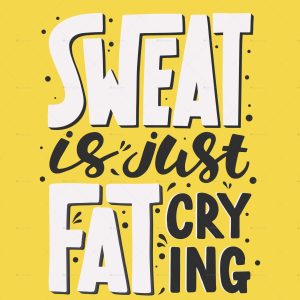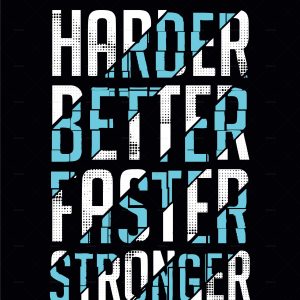Welcome to the “No Days Off Advanced Training Challenge,” a challenge designed for those who are ready to take their fitness journey to the next level.
This program is not for the faint of heart, as it is specifically designed for those who are past the beginner stage of training and are looking for a more challenging and intense program.
The challenge includes a training program that entails a no-days-off approach to training, which means that you will be working out every single day.
This program is not for everyone, and it requires a strong commitment and dedication to the training process.
However, if you are ready to push your limits and challenge yourself to achieve your fitness goals, then this program is for you.
With a focus on high-intensity workouts and a more thoughtful approach, this program will help you break through plateaus and reach your fitness goals faster than ever before.
Throughout the program, you will be challenged both mentally and physically, but the rewards will be worth it.
The challenge is designed to help you build lean muscle mass, increase your strength, and improve your overall fitness level.
Whether you are a seasoned athlete or a fitness enthusiast looking for a new challenge, this program will help you take your training to the next level.
The program is intense, but it is also structured to prevent injury and burnout, and ensure that you progress safely and efficiently.
Without further ado, let’s dive right in!
What Is No Days Off Training?
“No Days Off Training” is a term used to describe a rigorous training program where an individual trains every day without taking any rest days.
This approach to training is often used by advanced athletes or fitness enthusiasts who are looking to push their limits and maximize their results.
It requires a strong commitment and dedication to the training process as the body is constantly being challenged without any off days.
However, with proper planning and careful consideration of individual limitations, a no-days-off training program can be an effective way to achieve significant gains in strength, endurance, muscle mass, and overall fitness.
It is important to note that this approach should only be attempted by those who have already built a solid foundation of fitness and are experienced in high-intensity training.
Why Do No Days Off?
Training with no off days can be an effective way to maximize the results of your training program by distributing the same amount of work over more training sessions.
In fact, this is the core concept of this training style.
Think of it this way – would it be better to do 10 challenging sets for a single muscle group in one workout or 2-3 workouts?
If you decide to do them in a single workout, you’ll likely experience diminished performance somewhere after the 5th set.
On the other hand, if you do 2-3 workouts with 3-5 sets in each workout, you will be able to get more out of each set, as the muscles come in a fresh and adapted workout to workout.
Ultimately, progress majorly depends on total training volume, but with the no-days-off approach to training, that training volume can be maximized and optimized.
Additionally, by breaking up the workload into shorter daily sessions, there may be a reduction in the risk of overtraining or injury compared to longer, more intense workouts.
Ultimately, the concept of “less is more” applies here as training every day can be more efficient and effective than fewer, longer workouts.
However, it’s important to remember that a successful no-days-off training program requires proper planning, variation, and adequate recovery to avoid burnout and injury.
Recovery & Burnout
The concept of “no days off training” can be compared to micro-dosing workouts in the sense that it involves breaking up a larger workload into smaller, more frequent sessions.
Just as micro-dosing involves taking small, controlled amounts of a substance to achieve a desired effect, no-days-off training involves performing shorter workouts on a daily basis to achieve optimal results.
And even though the workouts are shorter and involve fewer total sets, they undoubtedly require a certain period of rest, in-between sessions that target each muscle group directly.
Setting Up The Training Plan
With all of the above in mind, it is fair to say that embracing the no-days-off challenge does not necessarily mean jumping straight into daily training with no plan in mind.
Even more so, such an approach to training is even more demanding in terms of planning, as this is the key part of ensuring that you will be able to recover day in and day out.
Let’s have a look at the 3 most essential aspects to consider when planning out your training plan, and then jump to our sample no-days-off training split based on the exact same principles.
Weekly Volume
When planning a “no days off” training program, the first step is to determine the appropriate training volume.
Think of volume as the total number of sets and repetitions done over the course of a week for a specific muscle group.
As an advanced trainee, you should aim for 10-15 challenging sets per muscle group per week.
It’s important to note that the specific number of sets needed may vary depending on individual factors such as training experience, goals, and recovery capacity.
However, 10 sets is a good place to start for intermediate/advanced trainees.
Start at 10 sets per muscle group, per week and work your way up to 15 sets.
Training Intensity
The second step in planning a “no days off” training split is to set the appropriate training intensity.
Think of training intensity as the amount of weight used – the heavier the weight, the higher the intensity.
Broadly speaking, 65-80% of your maximum strength capabilities allow you to do 6-12 repetitions, while 85-100% of your maximum strength capabilities allows you to do 1-5 repetitions.
This means that if you can bench press 100 kg for no more than one repetition, you should primarily do sets with 65-85 kilograms and occasionally go for heavier weights and lower reps.
As an advanced trainee, you should aim to use a variety of rep ranges between 3-12 and take your sets close to failure.
This range of rep ranges can help to stimulate both strength and hypertrophy adaptations in the muscles.
However, it’s important to note that not all sets need to be taken to failure, as this can lead to burnout and injury.
Instead, you can and should always leave a couple of repetitions in reserve.
By varying the rep ranges and using techniques to increase the intensity, you can ensure that each daily training session is challenging, diverse, and effective without being excessively fatiguing.
With this approach, you can maximize your results and make steady progress toward your fitness goals.
Rest Times
In addition to setting training volume and intensity, planning rest times between sets is also a crucial component of a “no days off” training program.
Rest times should be carefully planned to allow for sufficient recovery and to delay the onset of fatigue.
As an advanced trainee, longer rest times of up to 3 minutes are generally recommended, particularly when working with heavier weights.
This allows the muscles and nervous system to recover better between sets, enabling you to maintain a higher level of intensity and achieve more productive sets.
However, shorter rest times of 30-60 seconds can be effective for workouts where you just want to maintain a gnarly pump!
Ultimately, the specific rest times needed will vary depending on the individual’s fitness, but as a rule of thumb, each challenging set should be followed by at least 2 minutes of rest before the next set.
By carefully planning rest times, you can optimize your training sessions and ensure that each set is performed at maximum intensity, leading to optimal results.
Sample No-Days Off Split
So far, so good! We learned that the no-days-off training split could be a viable solution to maximize the results of your training efforts.
The best part is it does not entail grueling sessions and living in the gym day in and day out.
Even more, it entails a “less is more” approach!
Now let’s have a look at a sample training regimen, which involves a 4-days training split.
With this split, you will be hitting each muscle group twice over an 8-day period, so brace yourself!
Day 1 – Upper Body Anterior
| Exercise | Target | Sets | Reps | Rest Times |
| Incline Barbell Bench press | Upper chest | 5 | 10 | 2.5 minutes |
| Machine Chest Flys | Mid/lower chest | 2 | 12 | 2 minutes |
| Alternating Dumbbell Bicep Curls | Biceps | 4 | 10 per arm | 2.5 minutes |
| Standing Overhead Barbell Press | Shoulders | 3 | 10 | 2.5 minutes |
Day 2 – Lower Body Anterior
| Exercise | Target | Sets | Reps | Rest Times |
| Barbell Squats | Quadriceps | 5 | 10 | 3 minutes |
| Leg Press | Quadriceps | 3 | 8-10 | 2.5 minutes |
| Tibialis raises | Tibialis | 5 | 15 | 2 minutes |
| Hanging knee raises | Abdominal muscles | 5 | 15 | 2 minutes |
Day 3 – Upper Body Posterior
| Exercise | Target | Sets | Reps | Rest Times |
| Weighted Pull-Ups | Back | 5 | Close to failure | 2.5 minutes |
| Dumbbell Rows | Back | 3 | 10 per side | 2.5 minutes |
| Parallel Bar Tricep Dips | Triceps | 5 | 10 | 2 minutes |
Day 4 – Lower Body Posterior
| Exercise | Target | Sets | Reps | Rest Times |
| Bodyweight squats | Quadriceps | 4 | 15 | 60 seconds |
| Lower Back Hyperextensions | Lower back, glutes, hamstrings | 3 | 15 | 90 seconds |
| Barbell hip thrusts | Glutes | 5 | 12 | 2.5 minutes |
| Lying hamstring curls | Hamstrings | 5 | 10 | 2.5 minutes |
| Standing Machine Calf Raises | Calves | 5 | 15 | 2.5 minutes |
When To Take A Rest
When it comes to physical training, taking rest days is an essential part of the process, and that’s precisely why many people don’t believe the “no days off” approach is effective.
Though that stands true, some people may choose to forgo taking any scheduled days off and only take rest days when they feel they are needed.
This approach allows for a more flexible training schedule, as the individual can adjust their rest days according to their body’s needs and how they are feeling.
For example, if they feel particularly fatigued or sore even some days after a particularly intense workout, they can take a rest day to allow their muscles to recover fully.
On the other hand, if they feel energized and ready to push themselves further, they can continue training without interruption.
Ultimately, taking rest days only when needed can help individuals to optimize their training and achieve their fitness goals more effectively.
Finally, it is worth noting that you know you’re doing the no-days-off approach right when you feel more and more energized, workout to workout.
To Summarize
No Days Off Training is a rigorous training program where an individual trains every day without taking any rest days.
This approach is used by advanced athletes or fitness enthusiasts who are looking to push their limits and maximize their results.
It requires a strong commitment and dedication to the training process as the body is constantly being challenged without any off days.
The concept of “no days off” can be compared to micro-dosing workouts, where workouts are broken up into smaller, more frequent sessions.
With proper planning, variation, and adequate recovery, this training style can be an effective way to achieve significant gains in strength, endurance, muscle mass, and overall fitness.
So what are you waiting for? Hop on the challenge!
* The information presented in this blog article is intended to provide general information only and should not be considered as professional or expert advice. While we have made efforts to ensure the accuracy and completeness of the information, we cannot guarantee its correctness. We accept no liability for any loss or damage that may arise from your reliance on the information contained in this article. We encourage you to seek professional advice or conduct your own research before making any decisions based on the information presented here.













